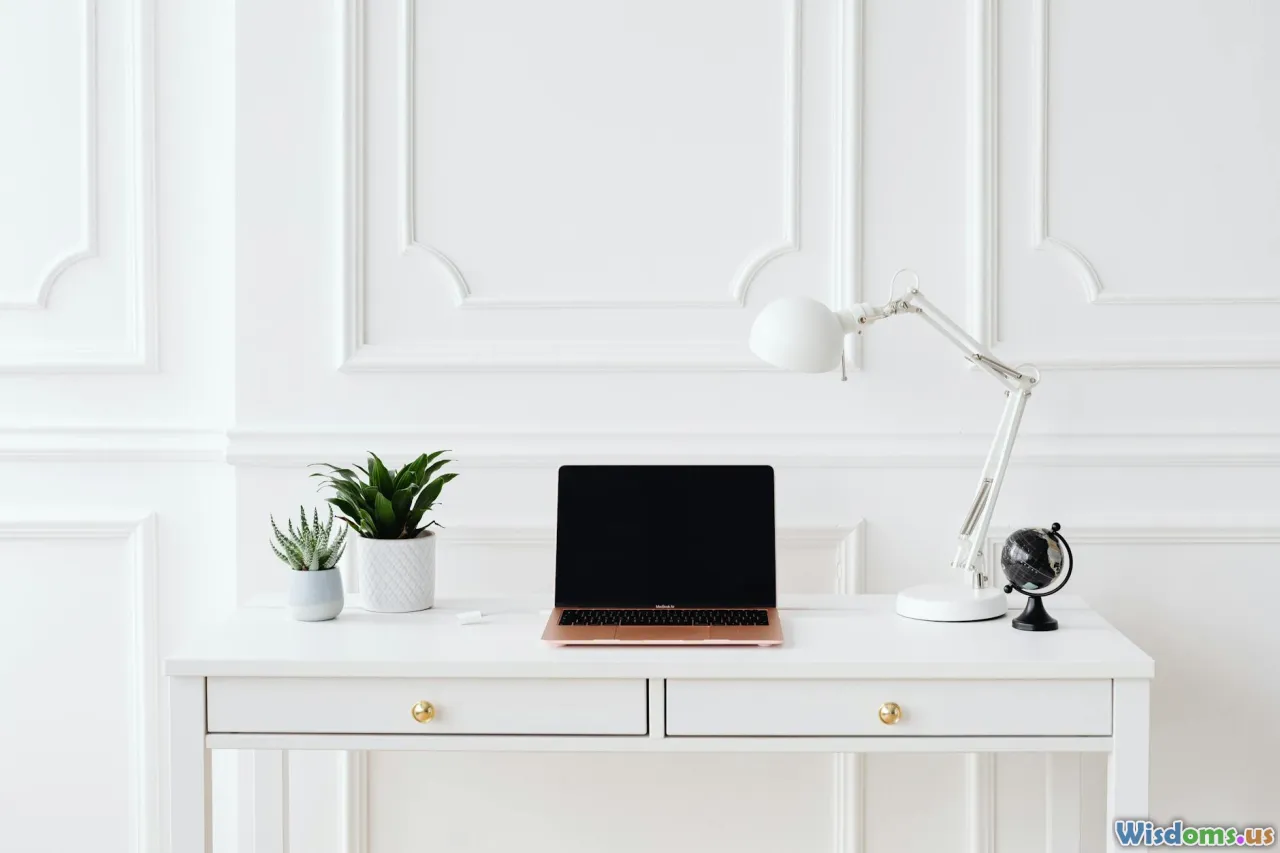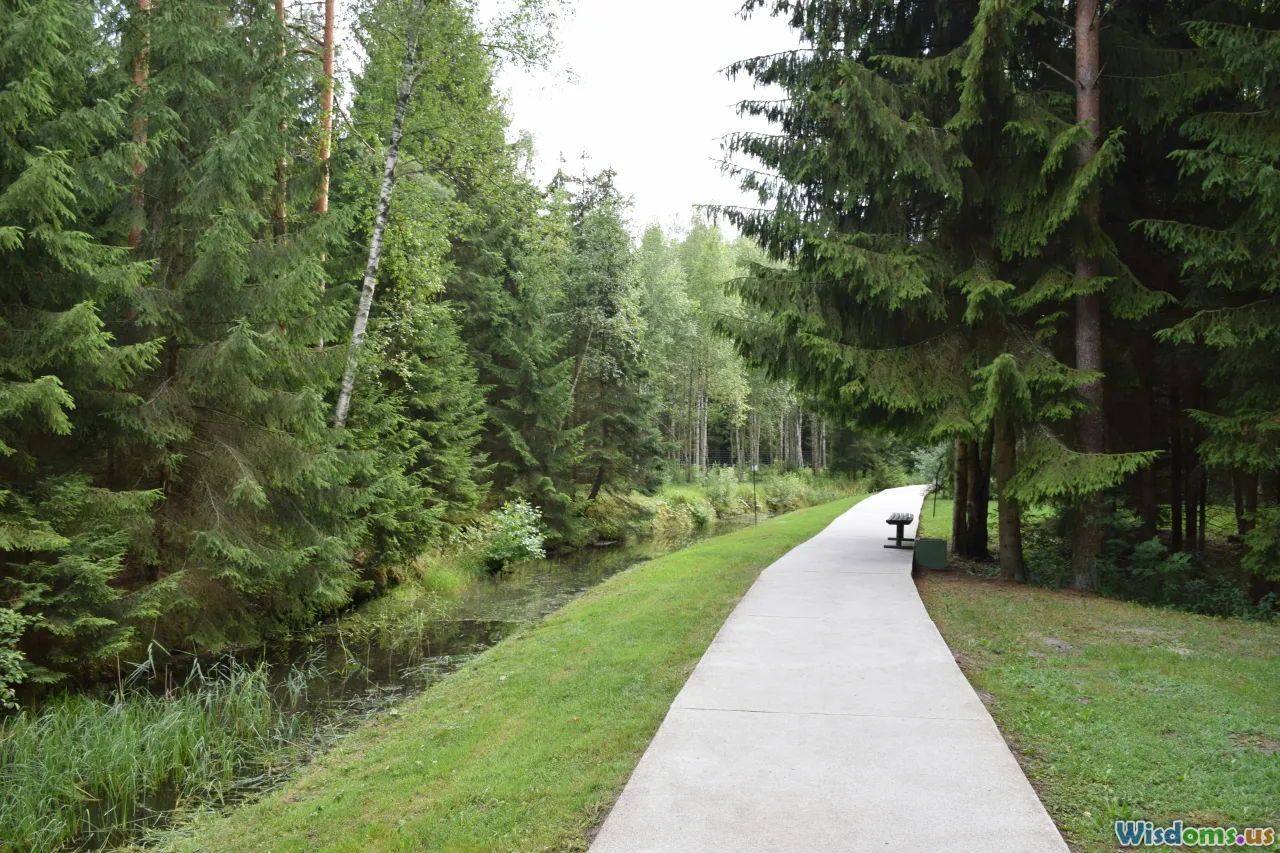
Work Life Harmony Lessons From Scandinavia Explained
15 min read Discover Scandinavian strategies for work-life harmony and practical lessons you can apply wherever you are. (0 Reviews)
Work Life Harmony Lessons From Scandinavia Explained
Finding the sweet spot between work and personal life is a universal quest—yet some nations seem to have cracked the code more effectively than others. Scandinavia, comprising Sweden, Norway, and Denmark, frequently tops global happiness, productivity, and work-life harmony rankings. What sets this northern region apart, and what key practices can others learn from their approach? Let’s unpack the secrets behind Scandinavia’s celebrated work-life harmony, from flexible workplaces to cultural mindsets, and see how these valuable lessons might apply around the world.
The Scandinavian Philosophy: Balance Over Burnout

Scandinavian countries don’t just pay lip service to work-life balance—they practice a philosophy that puts quality of life front and center. Rather than idolizing long hours or glorifying exhaustion, the Scandinavian mindset prioritizes being present both at work and at home.
A 2023 OECD survey showed that Danish employees worked an average of 33 hours per week, significantly less than many Western nations, and yet Denmark maintained high productivity per capita. Why? Culturally, Scandinavians view work as only one component of a fulfilling life. Social norms expect time for family, recreation, and personal interests—a stark contrast to the constant hustle that defines many workplaces elsewhere.
The Swedish concept of "lagom"—the idea of "just enough, not too much or too little"—encapsulates this balanced approach. This principle shapes not just working hours, but even how Swedes socialize, eat, and spend leisure time, influencing both micro and macro decision-making at all levels of society.
Flexible Work Arrangements: Trust and Autonomy

One distinguishing factor of Scandinavian work culture is the widespread availability of flexible work hours and remote arrangements. Instead of rigidly defined schedules, trust and autonomy are built into employment.
For example, Finland's Working Hours Act (2020) legally entitles most employees to flexible start and end times, and remote work is a norm rather than an exception across many sectors. This has been particularly effective in supporting working parents and individuals with diverse needs.
Swedish telecommunications company Ericsson implemented a "work from anywhere" scheme, allowing teams to be distributed while maintaining collaboration. Result: higher employee satisfaction and unchanged productivity. This empowerment communicates a profound respect for workers’ personal lives, reducing stress and burnout.
How to apply this lesson:
- Advocate for flexibility: Champion or propose pilot flexible hour schemes at your workplace.
- Embrace output over presence: Focus managerial practices on results rather than time spent in the office.
- Equip teams: Provide portable devices and create policies that support remote work realistically.
Shorter Workweeks: Efficiency Triumphs

When the world debates the merits of a four-day workweek, Scandinavia has quietly practiced shorter official hours for decades. Norway and Denmark both mandate a 37-hour workweek, and overtime is discouraged except in genuine need.
But does slashing hours make a difference? Yes, and the evidence is striking:
- Iceland’s four-day week experiment (2015–2019): Over 2,500 employees enjoyed reduced hours with no reduction in pay. Results? Productivity held steady or increased, absenteeism dropped, and mental wellbeing soared.
- Norwegian tech company TietoEVRY piloted six-hour workdays for select departments. Managers reported improved focus and quicker turnaround times, thanks to more motivated, rested staff.
This approach flips the narrative: instead of extracting more hours, the focus is on using time efficiently. Teams prioritize, cut unnecessary meetings, and hone in on high-impact tasks.
Quick tips for teams:
- Review workflows monthly and identify inefficiencies.
- Experiment with a "focus day" or condensed work hours; measure outcomes.
- Start meetings with clear agendas—and end on time.
Generous Parental Leave: Families at the Forefront

No discussion of Scandinavian work-life harmony would be complete without mentioning generous parental leave policies. Rather than viewing time off for family as an exception, it’s recognized as a right and an investment in society’s future.
Sweden leads in this domain, offering 480 days of parental leave per child, shared between both parents. A mandatory allocation for fathers helps normalize paternity leave, breaking gender stereotypes. In Norway and Denmark, new parents enjoy up to a year off at high salary coverage, supported by national social security systems.
These policies not only support family life but encourage greater gender equality in the workplace. With both parents eligible—and even expected—to take time off, workplace role expectations and career advancement hurdles are easier to negotiate for all genders.
Bringing this home:
- Companies can proactively improve internal leave policies, even if local laws lag.
- Leaders should encourage all employees, regardless of gender, to take full advantage of the benefits.
Vacation Culture: The Sacred Summer

If you’ve visited Scandinavia in July, you’d notice the quiet offices—and bustling cottages. Five-week minimum paid vacation is standard across the Nordic zone. Denmark, Sweden, and Norway prioritize time away from work as essential, not indulgent.
Many Scandinavians spend these long summer breaks in rustic cabins by the water (the Swedish "sommarstuga" and Norwegian "hytte"), away from email and meetings. This cultural norm is backed by firm legal protections: employers are prohibited from denying the minimum leave, and expectations discourage management from contacting employees on holiday.
Comparison: In the U.S., about a quarter of private-sector workers have no paid vacation, and only 1 in 4 uses all their entitled days. Contrastingly, Scandinavians have normalized the act of fully unplugging, making true rest possible.
Best practices to emulate:
- Encourage teams to plan vacations early and cover duties collaboratively.
- Respect boundaries—send the message that disconnecting is vital for creativity and renewal.
Workplace Equality and Inclusion: Supporting All Paths

Scandinavia is not just progressive in hours and pay, but also in fostering an egalitarian, inclusive, and psychologically safe workspace. Leadership hierarchies are flatter, and collaboration is fostered vertically and horizontally in organizations.
A Deloitte survey in 2023 showed Nordic countries have the highest proportion of women in senior management—over 35%, far above the global average. Policies on gender equality stretch from parental leave to non-gendered bathrooms, and support for LGBTQ+ staff is standard with clear anti-discrimination laws.
What does this mean for harmony? When people feel safe and valued, trust grows—leading to better collaboration, lower conflict, and greater engagement.
Actionable takeaway:
- Conduct regular equity and inclusion audits.
- Create employee resource groups that foster allyship and feedback.
- Promote transparent promotion structures and salary bands.
Designing Offices for Life, Not Just Work

Scandinavia’s embrace of holistic wellbeing extends to office design. Rather than sterile cubicles, you’ll find spaces that enhance both productivity and comfort: expansive common rooms, in-house cafeterias serving healthy meals, and a surprising amount of greenery or even saunas.
Natural light, flexible meeting spaces, and standing desks are not just perks—they’re standard. The Danish architecture firm Henning Larsen, for example, incorporates biophilic design (natural materials, living plants, flowing layouts) to align workplace atmosphere with wellbeing principles.
Swedish company IKEA’s campus features recreational zones, walking trails, and outdoor meeting spots, underscoring movement and connection to nature. These subtle environment cues boost mood and lower stress, underscoring that the workplace can (and should) cater to broader human needs.
Implementing in your setting:
- Add plants, standing desks, and relaxation zones to your office.
- Prioritize window seats and encourage walking meetings when possible.
Social Support Systems: The Safety Net Factor

Another pillar of Scandinavian work-life harmony isn’t found in boardrooms, but in the welfare state. Universal healthcare, free or low-cost education, robust unemployment insurance, and high-quality public transport ease outside-of-work burdens dramatically.
For many employees, stress isn’t just about work hours—it's about unpredictability in housing, childcare, or health costs. Scandinavia’s model reduces these stresses, meaning people can focus on work and family life without fear.
Key facts:
- Parents benefit from affordable daycare, enabling dual-income households and peace of mind.
- Healthcare is decoupled from employment, so changing jobs or taking parental leave does not disrupt access or coverage.
- Generous unemployment and sick-leave protections lead to greater workforce mobility and less presenteeism.
Global consideration: Even where broad social reform is not immediately possible, companies can ease burdens by offering childcare credits, mental health resources, or commuter stipends.
Embracing Nature and Movement: Daily Rituals for Wellbeing

It’s not all about policy: Scandinavians have woven communion with nature into daily routines. Walking, cycling, and skiing are not just hobbies; in Copenhagen or Oslo, half of all commuters use bikes or walk, despite long winters.
Swedish fika—a twice-daily coffee break—emphasizes rest and social connection. Norwegians speak of friluftsliv ("open-air living"), encouraging time outdoors as essential for mind and body. These practices benefit health, foster community at work, and promote creativity.
Proven benefits:
- 2021 research from the University of Bergen found that regular exposure to nature increased job satisfaction and reduced reported stress by 23% among professionals.
Tips to blend this lesson into any workplace:
- Institute short, regular group breaks to unplug and chat.
- Incentivize active commutes or weekday walks.
- Organize company nature outings or local volunteer efforts in community parks.
Beyond the Annual Report: The Life-Centric Bottom Line

At the end of the day, Scandinavia’s work-life harmony isn’t just about happier employees (although that’s a common outcome)—it matters for business outcomes too. The region consistently ranks high in global competitiveness indexes and scores at the top in employee engagement and retention:
- World Economic Forum Global Competitiveness Report (2023) places Denmark in the top 10.
- Gallup Global State of the Workplace (2023): Nordic employees report the highest levels of both job satisfaction and societal trust.
The takeaway for leaders is clear: integrating fairness, flexibility, wellbeing, and community doesn't just create better places to work—it lays a foundation for lasting innovation and prosperity.
Emulate Scandinavia, and the payoff could improve not just productivity, but life outside work, too—a lesson worth embracing, wherever you are.
Rate the Post
User Reviews
Popular Posts


















